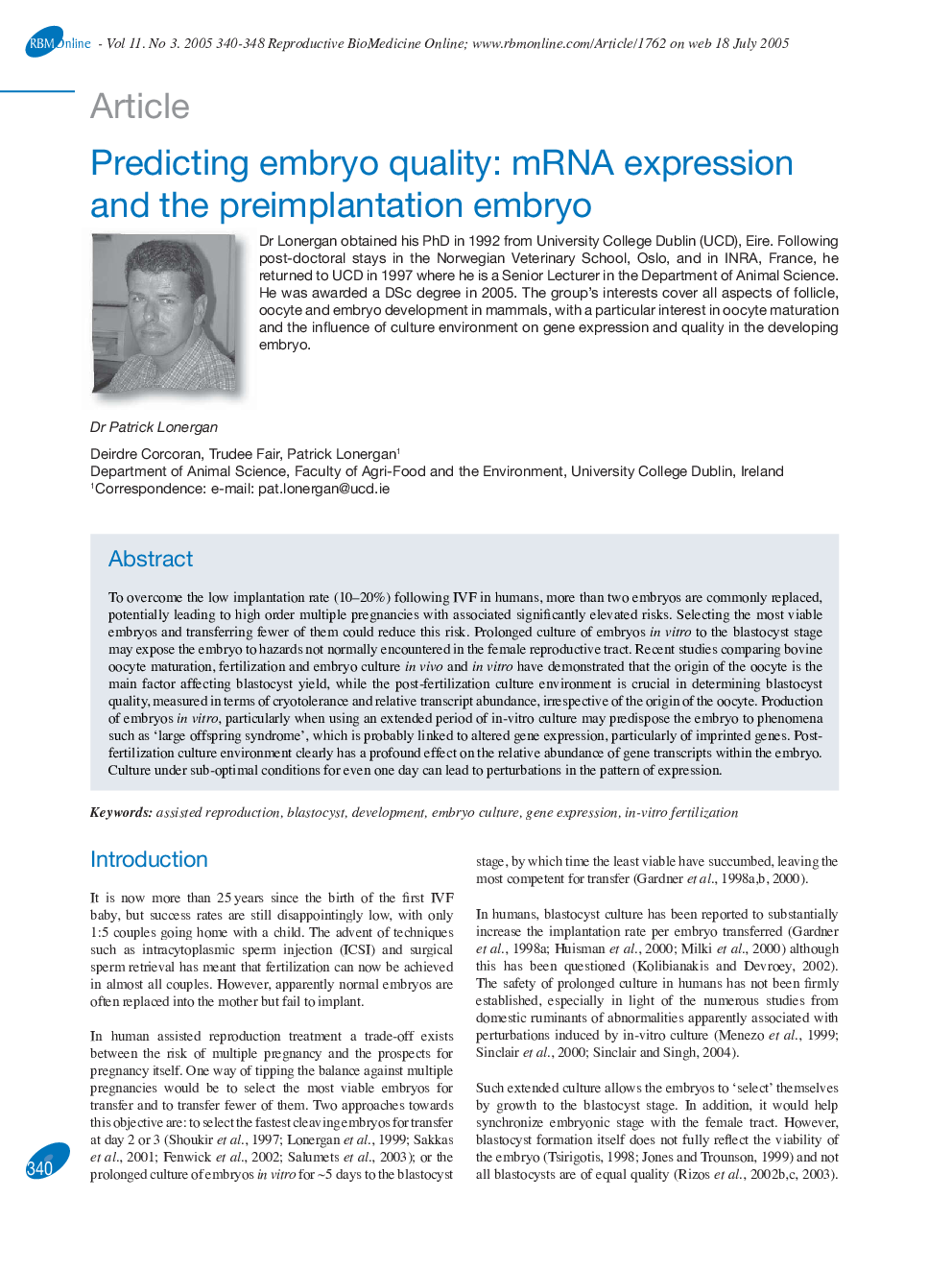| Article ID | Journal | Published Year | Pages | File Type |
|---|---|---|---|---|
| 9334691 | Reproductive BioMedicine Online | 2005 | 9 Pages |
Abstract
To overcome the low implantation rate (10-20%) following IVF in humans, more than two embryos are commonly replaced, potentially leading to high order multiple pregnancies with associated significantly elevated risks. Selecting the most viable embryos and transferring fewer of them could reduce this risk. Prolonged culture of embryos in vitro to the blastocyst stage may expose the embryo to hazards not normally encountered in the female reproductive tract. Recent studies comparing bovine oocyte maturation, fertilization and embryo culture in vivo and in vitro have demonstrated that the origin of the oocyte is the main factor affecting blastocyst yield, while the post-fertilization culture environment is crucial in determining blastocyst quality, measured in terms of cryotolerance and relative transcript abundance, irrespective of the origin of the oocyte. Production of embryos in vitro, particularly when using an extended period of in-vitro culture may predispose the embryo to phenomena such as 'large offspring syndrome', which is probably linked to altered gene expression, particularly of imprinted genes. Post-fertilization culture environment clearly has a profound effect on the relative abundance of gene transcripts within the embryo. Culture under sub-optimal conditions for even one day can lead to perturbations in the pattern of expression.
Keywords
Related Topics
Health Sciences
Medicine and Dentistry
Obstetrics, Gynecology and Women's Health
Authors
Deirdre Corcoran, Trudee Fair, Patrick Lonergan,
